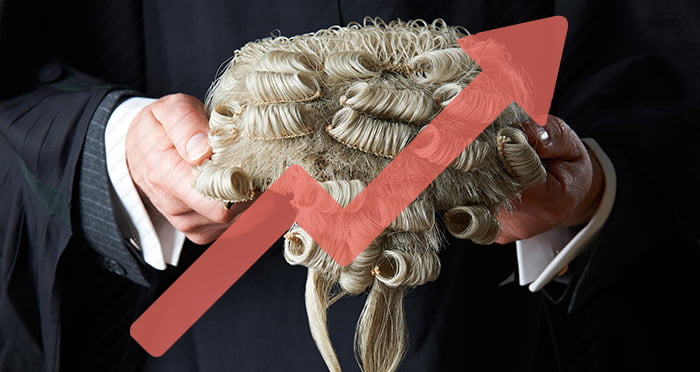Up by 14% after years of decline

The number of students enrolling on the Bar Professional Training Course (BPTC) has jumped by 14% after years of decline.
Statistics released by the Bar Standards Board (BSB) show 1,624 budding advocates enrolled on the BPTC in 2017, the highest figure since 2012 (1,803). In the years in between, the report traces a drop to 1,619 in 2013, followed by further drops to 1,505, 1,409 and 1,423 in respective years. These dips may be the result of the BSB’s introduction of the Bar Course Aptitude Test (BCAT), a 55-minute assessment taken by aspiring BPTC students as a sifting tool. The test consists of 60 multiple choice questions and costs £150 to sit.
Enrolled BPTC students, 2011-17

The BCAT is still compulsory for incoming BPTC-ers so why the latest increase?
The BSB reckons this can be partly explained by changes to BPTC provider sites. Cardiff and BPP have both upped their bar course places, while the latter has just recently opened a new bar course in Bristol. However, do note that of the 108 new places made available this year, fewer than half (52) were taken up.
Enrolling on the BPTC is a vital hurdle to barrister success, the next is finding a chambers to train you. The number of pupillages has increased very slightly over the years and currently sits at around the 470 mark. A crude equation dividing this by the number of budding barristers graduating each year would give you a ‘success rate’ of about 30% — but there are other factors to consider.
For starters, these figures look at BPTCs sat in the UK and pupillages on offer in the UK. About 40% of BPTC students are from overseas, meaning they may not choose to take part in the UK pupillage game. But, given that far from all BPTC graduates secure training positions straight away, aspiring barristers will find themselves tussling with applicants from years gone by, too.